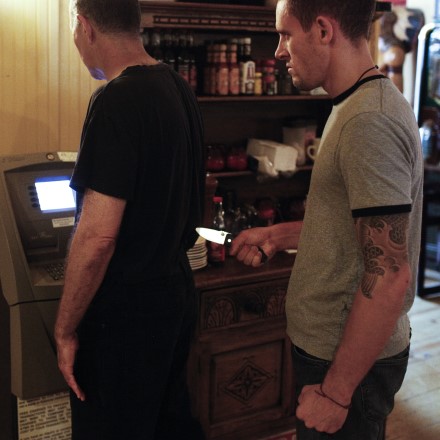Property Crime

Property Crime Articles
- Pick Pockets
- Burglary
- Muggers & Mugging
- How To Get Mugged in LA
- Stolen Goods & Demand
- Organized Retail Crime
All Criminology Articles
What Are Property Crimes
Property crimes can range from violent robberies and larceny to intellectual property theft (which may not even require the digital and/or physical movement of information) etc. This highlights the central difference between theft and larceny: larceny involves the taking of physical property without the owner’s permission, where theft can also cover the illegal use of somebody’s identity, digital data, and information, along with intellectual property etc. Robbery involves the taking of goods against an unwilling victim using physical force or the threat of physical force e.g., a pickpocket who takes somebody’s wallet without them knowing is committing larceny – stealing a physical item (also covered under the umbrella term of theft) – whereas a mugger who threatens somebody with a weapon, in order to get an individual to comply with their demands is committing robbery. A crime that started out as a theft could also turn into a robbery e.g., if a pickpocket is discovered during the committal of their offense, and then proceeds to use physical force in order to complete it etc. There is also a legal distinction made between unarmed and armed robbery e.g., a mugging committed using “Strong Arm” tactics, where no weapon is used but rather physical intimidation, is generally viewed as a less serious crime that one where a weapon is present.
In terms of risk mitigation, property is viewed as an “asset”, such as a car, a mobile phone and/or electronic items in a person’s home etc. These have degrees of vulnerability, that a threat can exploit e.g., a car that is left unlocked, with the keys in the ignition, is an asset, that has two obvious vulnerabilities that a threat (a car thief) can exploit. One way to harden the car as a target and reduce its vulnerabilities would be to ensure that the keys were never left in the ignition, and that the car was never left unlocked as these two vulnerabilities would help facilitate a car thief who was looking to steal vehicles etc.
Burglary is another form of theft/larceny, where an offender enters a property illegally in order to steal items/goods and in the case of commercial burglaries, possibly information. The common view is that burglary involves an offender physically breaking into a house or business, however this doesn’t have to be the case e.g., a criminal could use deception to gain entry either to a residential or commercial business posing as an employee of an energy company (the term “Breaking and Entry” covers deception as well as the use of force, such as prying open a window with a crowbar) etc. The legal definition of burglary can vary somewhat between states and countries e.g., in some cases, if an offender gains access to a property through an open door and doesn’t have to use force or deception to gain entry then in some cases a burglary has not been committed as the “Breaking and Entering” component of the crime. In some jurisdictions there may also be distinctions as to burglaries committed in the daytime versus those at night.
Some property crimes, such as shoplifting, and organized retail crime, may in some regards appear “victimless” in that they directly affect businesses and organizations that are able to claim on their insurance for these losses. However, these costs are past on to consumers in terms of higher prices and so do have a direct effect on a larger population. It should also be noted that organized retail crime is used by various terrorist groups to fund their operations, and so such offenses do directly affect the safety of individuals not directly connected with the crime.
References
Finklea, K. M. (2011). Organized Retail Crime. Washington, DC: Congressional Research Service
Forster, S (2019) The offence of burglary and aggravated burglary: Law and procedure. Criminal Lawyer 241(1): 2-13.
Ngozi, A. (2018). The Offences of Stealing, Robbery and Armed Robbery Distinguished. KIU Journal of Humanities 2(1): 81-88
Williamson, D. (2000). 'Robbery' in: Hendrix, E. H., & Turnbull, L. S. (eds) Atlas of Crime: Mapping the Criminal landscape. Phoenix, AZ: Oryx Press